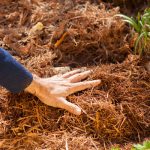In Japan, cherry blossoms are a symbol of beauty and fragility — a national symbol, to be sure, and the inspiration for countless outdoor festivals. But they are also a reminder of impermanence, similar to the way Texans feel about spring wildflowers.
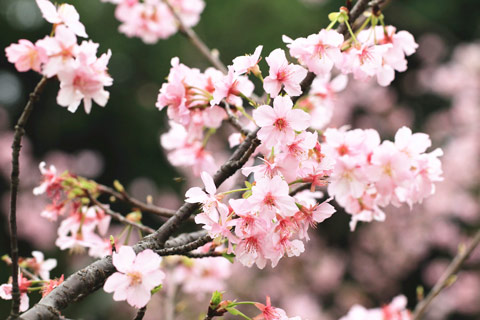
Like azaleas and camellias, Prunus serrulata prefers moisture and well-drained acidic soil; south-central Texas’ pH, heavy clay soils and scorching summers tend to be all wrong for the species. ‘Kwazan’ is the most reliable Japanese cherry for Texas, but it’s more easily seen at the Dallas Arboretum than in the local home landscape.
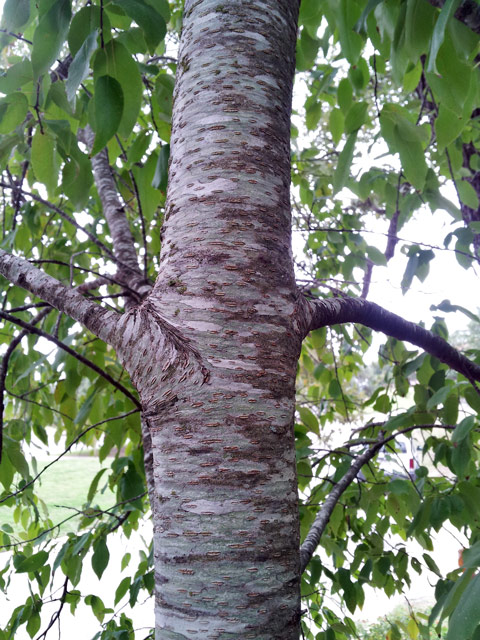
This native Texas variety is much smaller than its eastern cousin; the bark of young specimens is thin and pale, like a birch.
In central Texas, the native black cherry, P. serotina var. eximia, has recognizable cherry bark with gray and black striation on younger specimens. It resides in Hill Country tangles, easily recognized by the almond scent of its crushed glossy leaves. (The white, drooping flowers are a dead giveaway if you catch it in bloom.) It’s a common pioneer species among Ashe juniper, live oak and hackberry, and makes for a fast-growing specimen.
You’ll also encounter laurel cherry (P. caroliniana), an East Texas native valued for its evergreen foliage and its dense shrublike form. Like other cherries, the crushed leaves have a strong maraschino scent, hinting at the presence of hydrogen cyanide in the leaves; it gives this ornamental an extra measure of deer resistance. It performs better in the deeper soils of central and eastern Bexar County, so it thrives around Olmos Basin more than in Helotes.
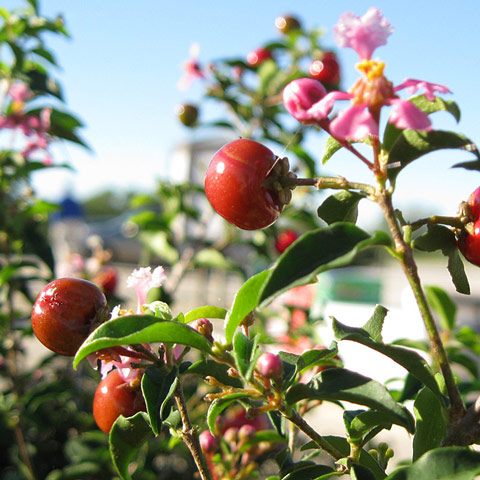
Although the Barbados cherry does have pink flowers, they resemble a crape myrtle more than a cherry blossom.
Another common landscape specimen is Barbados cherry or acerola, which is not technically a cherry at all but bears somewhat similar leaves and fruit. This is another of those semi-evergreen natives that is available in dwarf sizes and can be grown as a hedge; it’s popular in coastal South Texas and the Rio Grande Valley, since it tolerates sandy soil and makes a great bird feeder. Although the fruit is a bit mealy, it’s extremely high in Vitamin C.
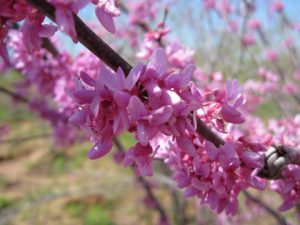
Your neighbors will certainly have yard envy when they see one of these gorgeous Texas redbuds in your yard! Bright, red-pink flowers coat this tree’s branches starting in early March.
Barbados cherry is loaded with pink color in summer. But if you’re hoping to create an effect similar to Japanese cherry in springtime — while it’s still cool enough to enjoy the color — you can do it with a combination of Texas redbud and Mexican buckeye (pictured at top.) They prefer dappled shade when young, so they’re great choices as understory plantings or background plants; both are featured in SAWS’ fall WaterSaver Landscape Coupon program.




